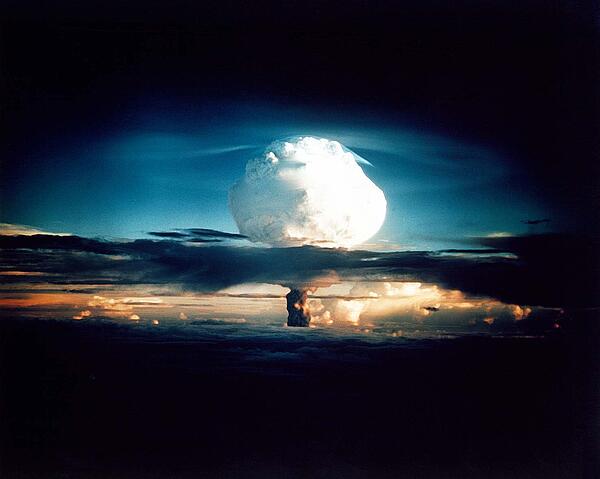The Nuclear Winter
The prospect of a nuclear winter was a very real fear during the height of the Cold War in the 1980s. Scientists from around the globe dedicated much time and energy in researching the effects of a nuclear war on civilisation. Their results were horrifying. They predicted that the conflict could result in a nuclear winter that would wipe out human civilisation.
The term ‘nuclear winter’ was coined in the 1980s to refer to cooling that could lead to extreme sub-zero temperatures occurring year-round. Nobody knew the exact effect these climatic changes would have on the earth, but scientists generally concluded that they would be catastrophic.
The fears were extenuated by the ever-increasing number of nuclear weapons accrued during the Cold War. By 1985, the world’s nations possessed an estimated 12,000 to 20,000 megatons of nuclear weapons. Considering the fact that 12,000 megatons is the equivalent to 860,000 ‘Little Boys’ - the bomb dropped on Hiroshima and Nagasaki in 1945 - the detonation of even a small portion of these arms was unthinkable.

In 1983, the Conference on the Long-Term Worldwide Biological Consequences of Nuclear War, held in Washington, D.C., highlighted the terrible outcomes of a nuclear winter. It concluded that a major nuclear war would lead to vast amounts of soot and dust rising into the atmosphere, especially from the burning of cities. This soot would absorb incoming solar radiation but continue to allow infrared heat to enter the ozone layer, resulting in a drop in surface temperatures. It would also mean the earth would be in near-constant darkness as the soot would block the sun’s rays. The temperature drop could cause massive death by freezing, while radiation could cause disease and destroy ecosystems. Once the dust had settled the Sun’s rays would once again get to ground level. But the ozone layer would be so damaged that much higher ultra-violet radiation would cause severe damage to the immune system to those humans who had survived. Whether the world’s entire population would eventually be wiped out is debateable, but it would definitely be significantly reduced.
Research into the nuclear winter was encouraged by peace activists during the 1980s, who used it to promote disarmament. As a result, there were conferences, Congressional hearings, extensive scientific research and even television specials into the threat. But as the Cold War wound down in the late eighties, so did the publicity surrounding the nuclear winter.
MLA Citation/Reference
"The Nuclear Winter". HistoryLearning.com. 2025. Web.
